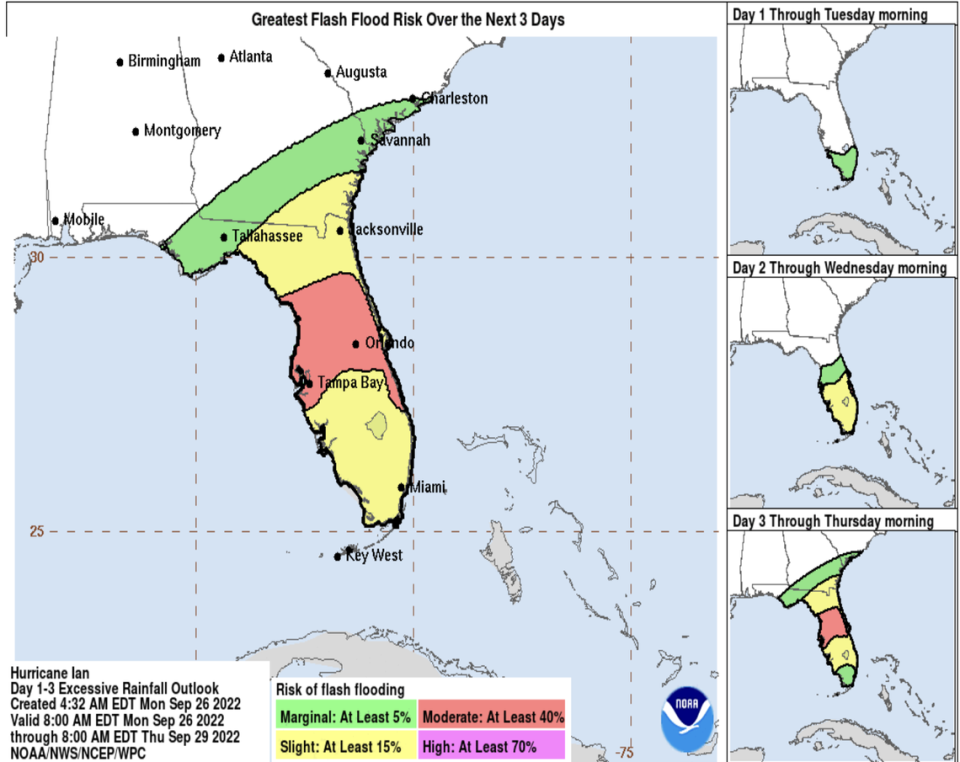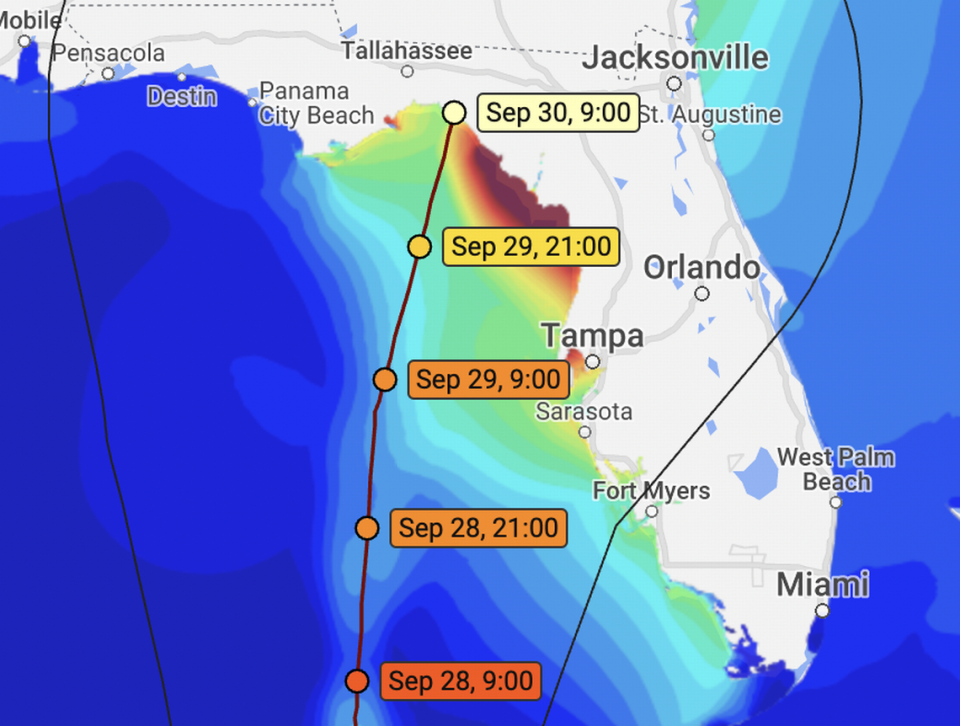Ian likely won’t head to South Florida but could make an impact. Here’s how — and why
Good news for South Floridians: Hurricane Ian is not forecast to travel directly over the region. However, there’s also troublesome developments: the system may still make its presence known.
Ian is forecast to strengthen in the Gulf of Mexico as it zips up the west coast, with a potential landfall in the big bend area later this week. Floridians across the state may notice the storm’s powerful force, and it won’t only be because people are taking bottled waters off the shelves expeditiously and standing in long lines at Publix.
Here’s how the approaching storm could impact South Florida — and what officials worry about as they brace for it to hit the state.
When will Florida start feeling the hurricane?
Hurricane Ian will be a long-drawn event, said Pablo Santos, a meteorologist at the National Weather Service in Miami. The storm will enter the Gulf of Mexico Tuesday and will move across the eastern Gulf until reaching the northeast by the end of the week.
Floridians could start to feel Ian’s winds and rains Tuesday, with hurricane conditions expected along Florida’s west coast Wednesday.
How will South Florida be impacted by Ian?
While South Florida isn’t in Ian’s projected trajectory, the region can still feel the storm’s effect.
“The storm doesn’t have to move right over us to create trouble for us,” Santos said.
The main concern in South Florida for flooding rains, Santos said. South Florida is currently at risk of excessive rainfall, which can produce flash flooding.

South Florida could see 4 to 8 inches of rain through Thursday, with some areas possibly seeing more rain, according to the weather service. There is a high risk for rip currents across all South Florida beaches.
Forecasters think the worst of the weather will likely be Tuesday through Wednesday. The lower Keys are under a tropical storm warning and a storm surge watch was issued along Florida’s southwest coast, which could see 3 to 5 feet of storm surge.
Heavy rain and flooding are a big concern for #SouthFlorida as Hurricane #Ian is forecast to strengthen and pass to our West. Through Thursday we may rainfall totals ranging from 4-8 inches. @CBSMiami #CBS4 pic.twitter.com/o2wubg0fCA
— Lissette Gonzalez (@LissetteCBS4) September 26, 2022
As Ian inches toward the southwestern coast, there is also concern for some tornado activity, Santos said. Areas of South Florida might feel strong wind gusts comparable to a tropical storm.
All these concerns, Santos said, can increase if the storm edges closer to the eastern edge of the cone.
“The likelihood of having a direct impact on us has diminished greatly over the last two days,” he said. “But that does not mean that we are immune to experiencing impacts.”
What about the parts of Florida projected to be hit by Ian?
Florida’s west coast is likely to be impacted by varying degrees of storm surges, Santos said. A hurricane watch is in effect for Florida’s west coast from Englewood to the Anclote River, including Tampa Bay. Additional watches may be required later Monday for Florida’s west coast.
A storm’s intensity, its wind field and the topography of the coast all affect the severity of the rise in water, Santos said. Over time, winds push water toward the coast, which spurs flooding.
Florida’s west coast — and Tampa Bay in particular — is uniquely vulnerable to storm surge. The shallow shelf in the Gulf of Mexico can push tremendous amounts of water onshore. The National Hurricane Center in its Monday morning advisory predicts there will be 5 to 8 feet of storm surge in Tampa Bay. From Bonita Beach to Cape Sable, there could be 3 to 5 feet of storm surge.

Coastal Emergency Risks Assessment, a map created by Louisiana State University that delivers storm surge guidance, predicts there will be hotspots near Tampa and much of the north-central coast of the state later into the week.
READ MORE: What is storm surge? What are its impacts? Is Florida at risk? Your questions answered

